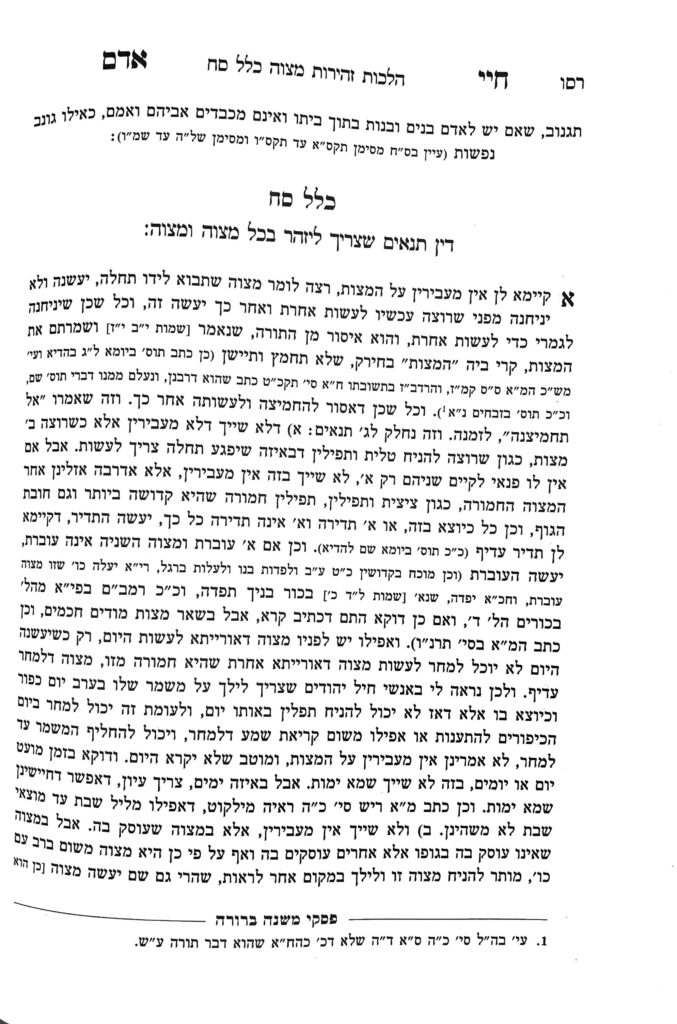We are continuing in siman 1, where the Chayei Adam introduces the concept of ain ma’avirin al hamitzvos. The concept of ain maavirin only applies when there are two mitzvos in question, where the proper way to perform them is the order in which they interface with the person, as we have learned regarding tallis and tefillin. The Chayei Adam writes that there are three limitations to this concept, in which ain ma’avirin would be superseded. Today we will discuss the first exception. The Chayei Adam gives three examples of the first exception.:
- If one does not have time to do both mitzvos, so it is no longer a question of both but either/or, the decision of which to do is not made based on the concept of ain ma’avirin, but rather based on which carries greater weight.
- For example, if one is only able to fulfill either the mitzvah of tallis or tefillin, they should fulfill the mitzvah of tefillin. It is considered more chamur due to its greater kedusha, and it is a chovas haguf. The mitzvah of tzitzis is contingent on the garment, in that on a torah level, one is only chayav in the mitzvah of tzitzis if they are wearing a four-cornered garment. There is no chiyuv, not even derabanan, to specifically put on a four-cornered garment. However, the Gemara tells us that one who does not take the opportunity to put on a four-cornered shows that they do not care about Hashem’s mitzvos, and at a moment of anger in shamayim, Hashem will punish them. On the other hand, tefillin is a chovas haguf, a chiyuv on a person themselves. Therefore, even if a tallis presents itself first, if a person knows they will not have the opportunity to fulfill both, he should pass over the tallis and put on the tefillin.
- Or the decision which one of the two to do is based on the principle of tadir v’she’eino tadir. When one is faced with a frequently-occuring mitzvah and a mitzvah which occurs only occasionally, and they can only perform one, thenthey should perform the more frequently occuring mitzvah.
( this is a chidush, because usually, this concept is understood to apply ot order of events, but not when one can only do one of the two. The Chayei Adam is telling us that being tadir confers a chashivus to the mitzvah, and therefore, it should be the one chosen).
- Or if one of the mitzvos in question can only be fulfilled for a limited amount of time, and the other does not have a time limit, one should fulfill the mitzvah with a time limit instead of the mitzvah which does not have a time limit, regardless of the order in which the person encounters them.
Summary
There are three limitations to the application of ain ma’avirin:
- If one is only able to fulfill one of the mitzvos,
- in which case they perform the mitzvah which carries greater weight;
- Or if one of the mitzvos is more tadir;
- Or if one of the mitzvos has a time limit.
In these cases, ain ma’avirin is superseded.



